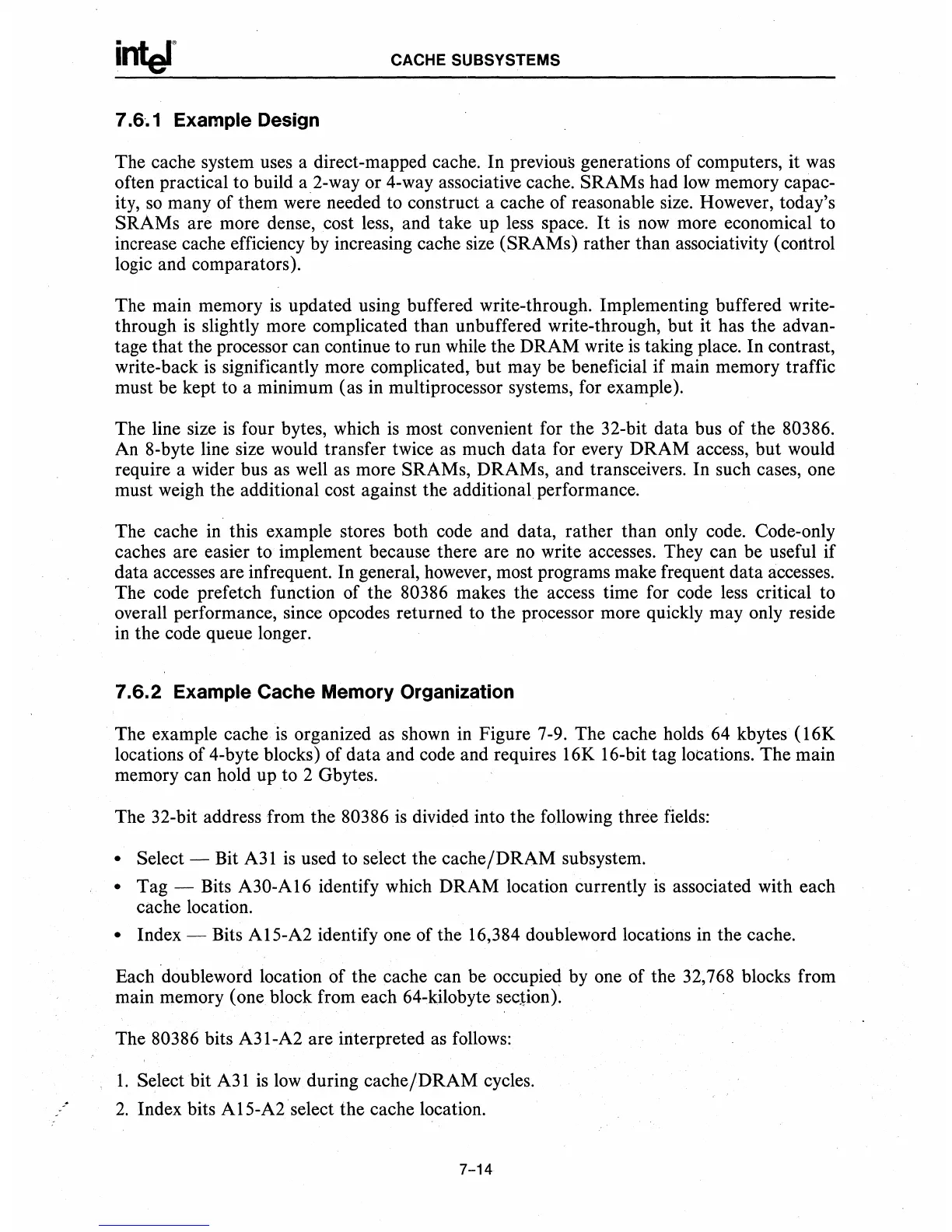CACHE SUBSYSTEMS
7.6",1
Example Design
The cache system uses a direct-mapped cache. In previoull generations of computers, it was
often practical to build a 2-way or 4-way associative cache.
SRAMs had
low
memory capac-
ity,
so
many of them were needed to construct a cache of reasonable size. However, today's
SRAMs are more dense, cost less, and take up less space.
It
is
now
more economical to
increase cache efficiency by increasing cache size (SRAMs) rather than associativity
(coI1trol
logic and comparators).
The main memory
is
updated using buffered write-through. Implementing buffered write-
through
is
slightly more complicated than unbuffered write-through, but it has the advan-
tage that the processor can continue to run while the DRAM write
is
taking place. In contrast,
write-back
is
significantly more complicated, but may be beneficial if main memory traffic
must be kept to a minimum (as in multiprocessor systems, for example).
The line size
is
four bytes, which
is
most convenient for the 32-bit data bus of the 80386.
An 8-byte line size would transfer twice
as
much data for every DRAM access, but would
require a wider bus
as
well
as
more SRAMs, DRAMs, and transceivers. In such cases, one
must weigh the additional cost against the additional performance.
The cache in this example stores both code and data, rather than only code. Code-only
caches are easier to implement because there are
no
write accesses. They can be useful if
data accesses are infrequent. In general, however, most programs make frequent data accesses.
The code prefetch function of the
80386 makes the access time for code less critical to
overall performance, since opcodes returned to the processor more quickly may only reside
in the code queue longer.
7.6.2
Example Cache Memory Organization
The example cache
is
organized
as
shown in Figure 7-9. The cache holds 64 kbytes
(l6K
locations of 4-byte blocks) of data and code and requires 16K l6-bit tag locations. The main
memory can hold up to 2 Gbytes.
The 32-bit address from the
80386
is
divided into the following three fields:
• Select - Bit
A3l
is
used to select the cache/DRAM subsystem.
• Tag - Bits A30-A16 identify which DRAM location currently
is
associated with each
cache location.
• Index - Bits A15-A2 identify one of the 16,384 doubleword locations in the cache.
Each "doubleword location of the cache can be occupied by one of the 32,768 blocks from
main memory (one block from each
64~kilobyte
section).
The
80386 bits A3l-A2 are interpreted
as
follows:
l.
Select bit
A31
is
low
during cache/DRAM cycles.
2.
Index bits A15-A2 select the cache location.
7-14

